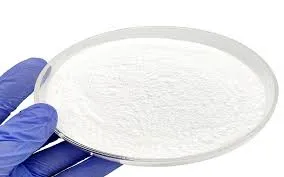The interaction between ammonium thiocyanate (NH4SCN) and silver nitrate (AgNO3) presents an intriguing realm of chemistry characterized by a fascinating precipitation reaction. This article explores the fundamental aspects of this chemical process, its implications, and potential applications.
Ammonium thiocyanate is a white crystalline compound that, when dissolved in water, dissociates into ammonium (NH4+) and thiocyanate (SCN-) ions. Silver nitrate, on the other hand, is a colorless, soluble salt that dissociates into silver (Ag+) and nitrate (NO3-) ions in aqueous solution. When these two compounds are mixed, a double displacement reaction occurs, leading to the formation of silver thiocyanate (AgSCN), which is a white precipitate, and ammonium nitrate (NH4NO3), which remains in solution.
The overall reaction can be summarized by the equation
\[ \text{NH}_4\text{SCN}(aq) + \text{AgNO}_3(aq) \rightarrow \text{AgSCN}(s) + \text{NH}_4\text{NO}_3(aq) \]
nh4scn agno3

This precipitation reaction is notable for various reasons. Firstly, the formation of silver thiocyanate is indicative of a direct chemical transformation that can be visually observed when a solid precipitate forms in a clear solution. This visual cue is not only fascinating but also serves as a useful educational tool in teaching fundamental concepts of chemical reactions, stoichiometry, and solubility.
Moreover, AgSCN has unique properties that open doors for its utilization in various fields. For instance, silver thiocyanate is known for its application in the field of photography, particularly in the formation of photographic emulsions. Its ability to absorb light makes it critical for capturing images on film.
Another important aspect of the NH4SCN and AgNO3 reaction is its application in analytical chemistry. The presence of thiocyanate ions can be determined using silver nitrate as a titrant in argentometric titrations. The formation of the white precipitate of AgSCN helps chemists quantify the concentration of SCN- in a solution, which is essential in various industrial and research applications.
In summary, the interaction between ammonium thiocyanate and silver nitrate is a prime example of a classical precipitation reaction with significant educational, industrial, and analytical implications. As students and chemists engage with this reaction, they not only witness a remarkable chemical transformation but also gain insights into the broader applications of chemistry in real-world contexts. This interplay of theory and practice exemplifies the beauty of chemical sciences, where simple reactions can lead to profound understanding and innovation.

